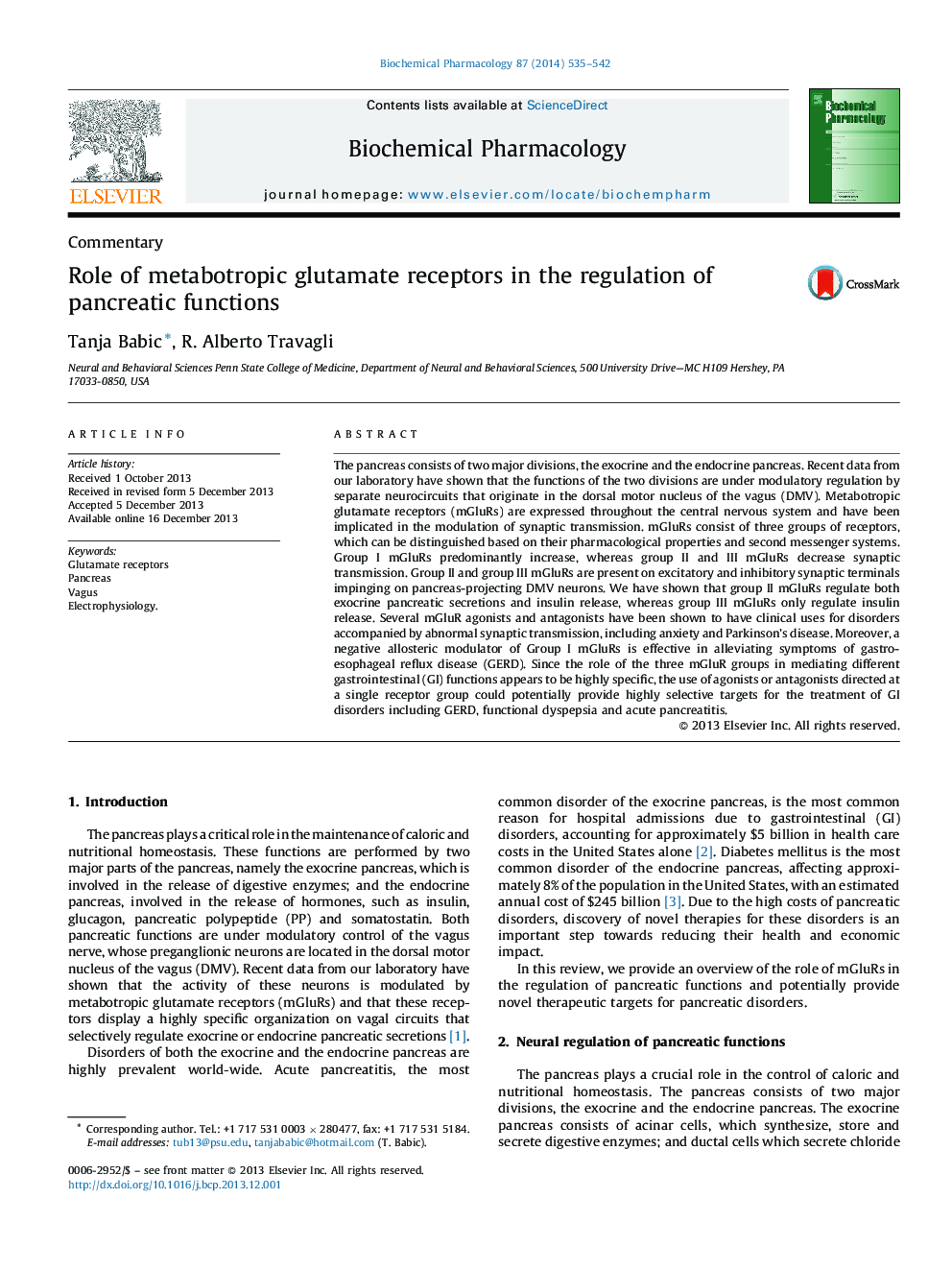| Article ID | Journal | Published Year | Pages | File Type |
|---|---|---|---|---|
| 2512241 | Biochemical Pharmacology | 2014 | 8 Pages |
The pancreas consists of two major divisions, the exocrine and the endocrine pancreas. Recent data from our laboratory have shown that the functions of the two divisions are under modulatory regulation by separate neurocircuits that originate in the dorsal motor nucleus of the vagus (DMV). Metabotropic glutamate receptors (mGluRs) are expressed throughout the central nervous system and have been implicated in the modulation of synaptic transmission. mGluRs consist of three groups of receptors, which can be distinguished based on their pharmacological properties and second messenger systems. Group I mGluRs predominantly increase, whereas group II and III mGluRs decrease synaptic transmission. Group II and group III mGluRs are present on excitatory and inhibitory synaptic terminals impinging on pancreas-projecting DMV neurons. We have shown that group II mGluRs regulate both exocrine pancreatic secretions and insulin release, whereas group III mGluRs only regulate insulin release. Several mGluR agonists and antagonists have been shown to have clinical uses for disorders accompanied by abnormal synaptic transmission, including anxiety and Parkinson's disease. Moreover, a negative allosteric modulator of Group I mGluRs is effective in alleviating symptoms of gastro-esophageal reflux disease (GERD). Since the role of the three mGluR groups in mediating different gastrointestinal (GI) functions appears to be highly specific, the use of agonists or antagonists directed at a single receptor group could potentially provide highly selective targets for the treatment of GI disorders including GERD, functional dyspepsia and acute pancreatitis.
Graphical abstractFigure optionsDownload full-size imageDownload as PowerPoint slide
